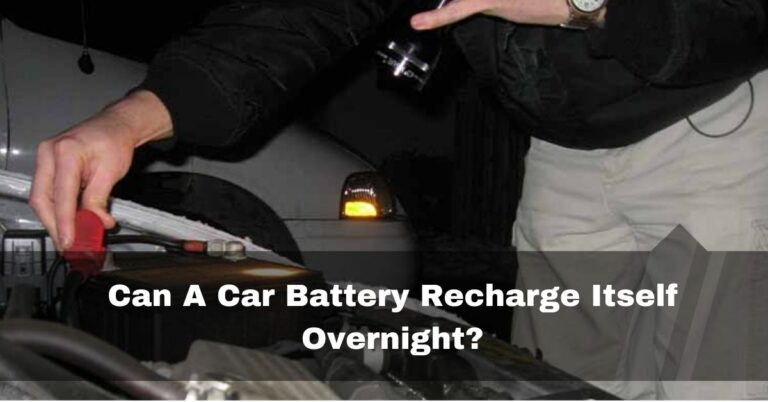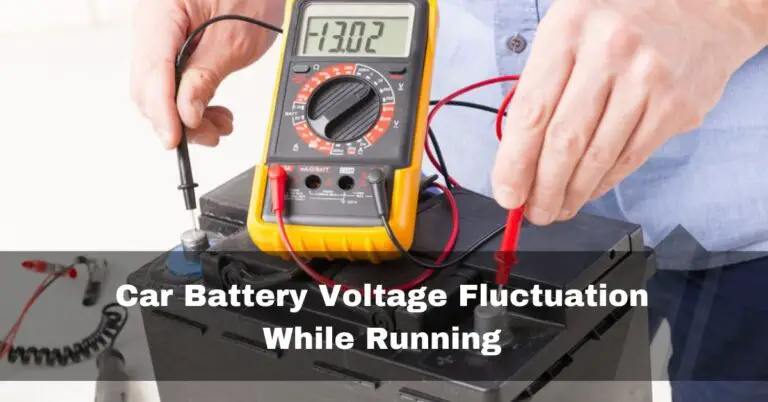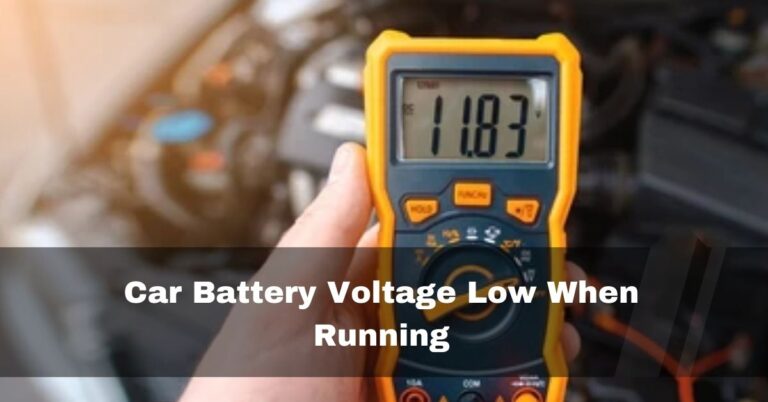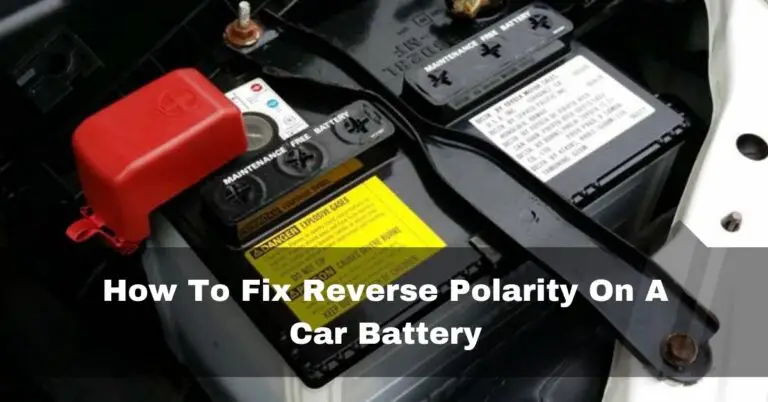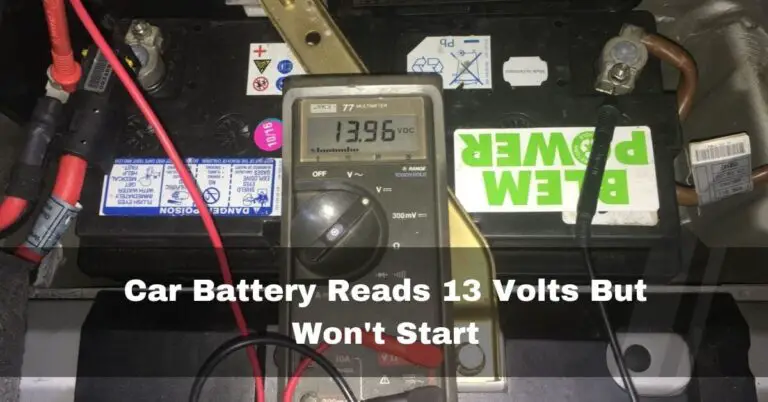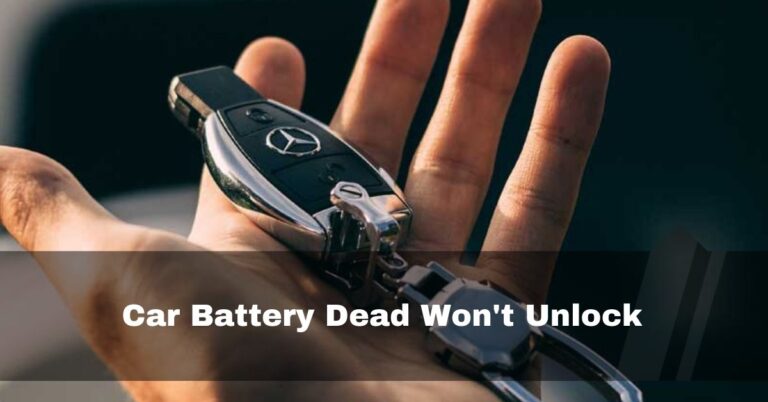Car Inspection After New Battery – [2024] Quick Inspection
After installing a new battery in my car, I realized the importance of conducting a thorough inspection afterward. It’s easy to overlook potential issues that may arise from such a seemingly simple task.
After a new car battery installation, drive 75-100 miles to reset OBD-II readiness monitors in Ready state, use an OBD2 scanner to verify readiness, and then schedule and pass the inspection.
In this article, we’ll explore why a new battery can affect your car’s inspection, what you should do if you encounter this situation, and how to prepare for a successful inspection after a battery replacement.
Table of Contents
If I Disconnect My Car Battery Will It Pass Inspection?
The inspection checks for trouble codes in the onboard computer. If the battery is disconnected, all codes are erased. It’s crucial to drive the car enough for the computer to record a “clean” history before inspection.
Why Does A New Battery Affect Your Car Inspection?
After installing a new battery in my car, I encountered an unexpected issue with my vehicle inspection. After installing a new battery, my car failed its inspection due to readiness monitor issues. Modern cars reset their OBD-II system’s memory when you change the battery, affecting emissions tests.
Also Read: Does A Car Battery Charge Faster When Driving?
Emissions Test After New Battery:
After replacing a battery or if it went dead, don’t rush for an emission test. When a battery drops below five volts, the vehicle’s computer memory is lost. Without proper memory, your vehicle won’t pass the test and will be “Rejected.”
What To Do After Replacing Your Car Battery For Inspection
Now that we understand why a new battery can affect your inspection let’s explore what steps you should take to ensure a successful inspection:
1. Drive Your Vehicle:
Car Inspection Failed Due To Battery? After replacing the battery, it’s crucial to drive your car for 75 to 100 miles to allow the onboard computer to reset its systems and readiness monitors.
2. Monitor Readiness Status:
Use an OBD2 code reader to check if your car’s monitors are “Ready,” indicating proper emission control system function. Monitors include misfire detection, oxygen sensor monitoring for fuel efficiency, catalytic converter performance, EVAP system functionality, and EGR system operation to reduce NOx pollution.

3. Keep Records:
Record the date and mileage of the new battery installation along with details of the old battery replacement. This documentation can be valuable for future reference and as evidence in case of any queries regarding the new battery.
4. Schedule Your Inspection:
Schedule your state inspection once all readiness monitors are “Ready,” following local guidelines for emissions testing and paperwork.

The Importance Of Readiness Monitors
Ensuring that all monitors are “Ready,” inspectors can adequately check if a vehicle meets emissions standards.
1. Ready vs. Not Ready Status:
- Ready: This state means that the OBDII system checked a specific emissions control system and is now working as it should.
- Not Ready: If the OBDII system is not ready, it needs to check a specific emissions control system. It means the system still needs to finish its testing or review process.
- N/A or N/S: This state means that the OBDII system does not need to check that particular emissions control system (N/A or N/S). There’s no need to evaluate some systems because they might not work with some cars.
2. Common Reasons For “Not Ready” Monitors:
The main reason monitors are in a “Not Ready” state is usually due to a battery disconnection. Common instances include engine maintenance requiring battery removal, battery replacement, installing a new car radio, or adding a car alarm.
3. Locating Readiness Monitor Status On The Vehicle Inspection Report (VIR):
The Emissions Test Results part of the VIR will indicate if a monitor is “Ready,” “Not Ready,” or in a state of N/A or N/S. Remember that the requirements for a readiness monitor may be different based on the year model of your vehicle:
- 2001 and newer vehicles: One non-continuous monitor can show “Not Ready” and still pass the test, but two or more “Not Ready” readings will mean the car fails.
- 1996 – 2000 vehicles: These cars can pass the test even if two monitors are simultaneously in a “Not Ready” state. If three or more monitors say “Not Ready,” the car will not work.
Also Read: Why Is My AC Draining My Car Battery?
Changing Monitors To “Ready”
This is what you can do to help you pass an inspection if you just changed your car’s battery and are having trouble because the readiness monitors aren’t set:
1. Performing A Drive Cycle:
Performing a drive cycle after battery replacement is crucial to set the “ready” devices:
- Ensure the gas tank is between 1/4 to 3/4 full.
- Start when the engine is cold.
- Drive 15 minutes on the highway (45-65 mph) for the oxygen sensor, catalyst, and evaporative system.
- Drive 10 minutes in city traffic for secondary air system and exhaust gas recirculation (EGR)
2. Using An OBD-II Scanner:
If you have an OBD-II reader, check the readiness monitors to see how they are doing. If every computer says “ready,” you should be able to pass the test.

How To Reset Monitors After Battery Replacement?
If you replaced your car’s battery and are getting “not ready” monitors during your emissions test, there are steps you can take to help reset these monitors and pass the inspection:
1. Ensure A Cold Start:
Start with the engine cold. The engine is usually cold to start when it has been off for a few hours or overnight.
2. Turn Off Accessories:
Before starting the car, turn off all accessories, including the air conditioning and heating system and any electrical equipment added after the car was bought.
3. Ignition On (Engine Off):
Put the key in the “ON” position without starting the engine. Let it stay in this position for about a minute.

4. Start The Engine:
To complete the drive cycle after a battery replacement:
- Let the engine idle for 2 minutes until it reaches 65°C (149°F) temperature.
- Drive for 8 minutes, maintaining:
- Mass Air Flow (MAF) between 4 to 30 grams per second.
- Engine speed between 1,000 and 3,000 RPM.
5. Apply The Brake (Automatic) Or Clutch (Manual):
Press and hold the brake pedal while moving if your car has an automatic transmission. Press and hold the clutch pedal if your car has a manual transmission. Drive the car for about two minutes under the following conditions:
- Between 15 and 30 grams per second, the MAF signal.
- RPM is always between 1,200 and 1,500.
Let go of the accelerator pedal, and don’t touch it for two minutes while the car runs.
6. Drive The Vehicle:
Drive the car for about two minutes at 15 mph or less. This step is crucial if you want to finish the EVAP watch. Drive the car at speeds between 28 and 70 mph for at least 5.5 miles, with the car hitting at least 50 mph.
7. Turn Off The Engine:
Stop the car safely, set the parking brake (if the car is automatic) or shift to “Park” (if the car is automated) or “Neutral” (if the car is manual), and then turn off the engine.

For at least 45 minutes, don’t touch the car or turn on the engine.
After 45 minutes, use a scan tool to check the I/M (Inspection/Maintenance) System Status. All signs for the I/M System Status should show “YES.”
Also Read: Car Battery Light Comes On When Idling
How To Pass An OBD-II Inspection After Changing The Battery?
“Recently, I encountered the need to change my car’s battery, and I wanted to ensure a smooth OBD-II inspection afterward. Following these steps not only helped me pass the inspection but also provided peace of mind knowing my car was in top condition.”
- Check Warning Lights: Look for any lit warning lights, especially the “Check Engine” light, before changing the battery. Note down any Diagnostic Trouble Codes (DTCs).
- Replace Battery: Install the new battery securely and correctly.
- Reset OBD-II System: Disconnect the negative battery terminal for 15-30 minutes to reset the system.
- Perform Drive Cycle: Drive through specific conditions to allow the OBD-II system to reevaluate.
- Complete Inspection: Schedule an inspection once all monitors show “ready.

Related Questions:
1. What To Check After Replacing Car Battery?
- Check the battery’s installation and connections.
- Inspect fuses and relays.
- Use an OBD-II scanner to check for fault codes.
- Ensure there are no abnormal electrical draws.
2. Do I Need To Do Anything After Changing Car Battery?
Reset the clock, radio presets, power windows, and the vehicle’s computer system to their desired settings.
3. How Do I Know If My Drive Cycle Is Complete?
To confirm the completion of a drive cycle, you’ll need to undergo an emission test. If the error codes have disappeared, it indicates that the drive cycle is complete.
4. How Do I Get My Check Engine Light Off To Pass Inspection?
The easiest way to turn off the check engine light temporarily is by disconnecting the battery for around 30 seconds. However, for inspection purposes, ensure a full drive cycle is completed so that all internal monitors show a “Ready” status.
5. How Do I Know If My OBD Is Ready?
To check OBD readiness, turn the ignition key to the “on” position for 15 seconds. If the “Service Engine Soon” light blinks eight times, some monitors are incomplete. If the light stays solid, all monitors are complete.
6. Can A Brand New Battery Be Bad?
If a brand-new battery shows excessively low voltage when tested with a multimeter, it may be defective. In such cases, it’s advisable to visit a local auto care center for a comprehensive inspection.
7. How Many Miles Do You Have To Drive After Replacing The Battery?
Drive your car for 75 to 100 miles post-battery change to allow the onboard computer to reset systems and readiness monitors, ensuring accurate diagnostics in varied driving conditions.
8. How Long After The Battery Disconnect Is The Car Ready For Emissions?
If the check engine light is on, the car won’t pass a pollution test. After a battery disconnect or code clearing, driving in various conditions for up to a week is needed for it to pass.
9. Does Changing Car Battery Affect Mileage?
A bad battery can impact fuel economy as the alternator exerts more power to charge it, consuming extra fuel and straining the battery.
10. What Happens If You Change The Car Battery And Fail Smog Check?
When you change your car’s battery, disconnect it, or jump-start it, there’s a risk that the vehicle’s internal test monitors will be reset. These monitors are crucial for your car to complete and pass a smog test.
Conclusion:
In conclusion, changing the battery in your car can mess up the ready monitors needed for emissions tests. Follow these steps to pass a check after changing your battery: Drive your car for 75-100 miles to reset the monitors, check the readiness state with an OBD2 scanner, keep records, schedule the inspection when the monitors say “Ready,” and do the test. Ensure all monitors display “Ready” and fix any warning lights or Diagnostic Trouble Codes (DTCs).
Also Read:
- Battery Light Going Off At 3000 RPM
- Car Battery Dies After Getting Gas
- Battery Sparked Now Car Won’t Start
- Car Tries To Start When I Connect The Battery
References:
- https://www.corvetteforum.com/forums/c6-corvette-general-discussion/3074586-new-battery-failed-inspection-how-long-before-it-is-ready.html
- https://www.reddit.com/r/Dallas/comments/ejmsrd/new_battery_caused_emissions_log_to_wipe_cant/
- https://www.quora.com/Why-do-we-have-to-drive-our-cars-100-miles-after-changing-the-battery-in-order-to-pass-the-smog-test
- https://www.toyotanation.com/threads/help-need-to-pass-inspection-after-changing-battery.394840/
- https://www.capitalandautoservice.com/About/Blog/ArticleID/164/car-batteries-nys-inspections

